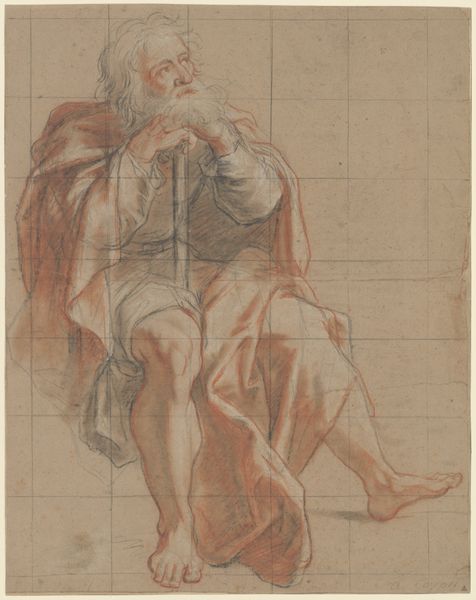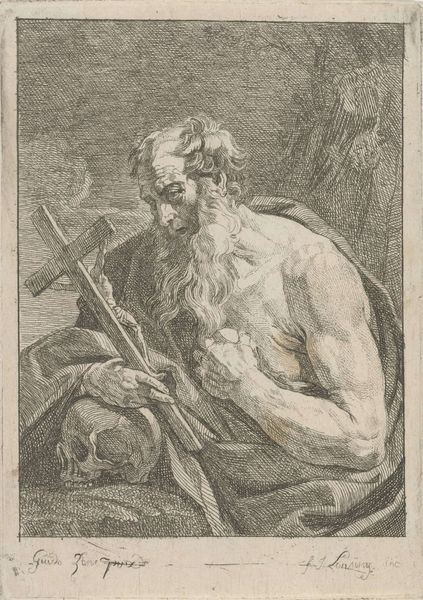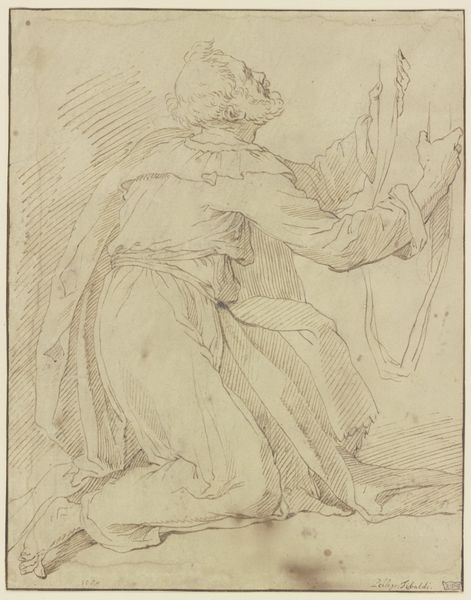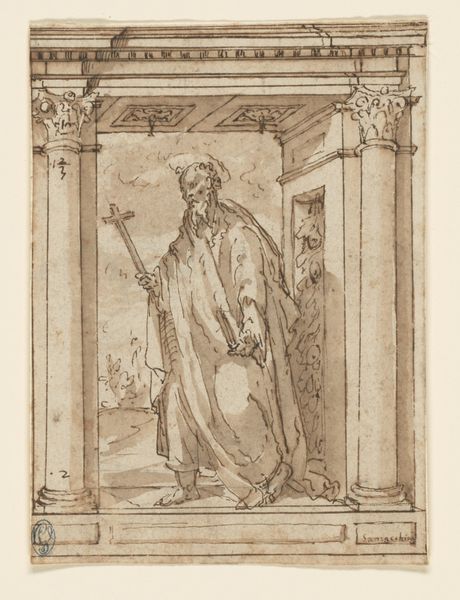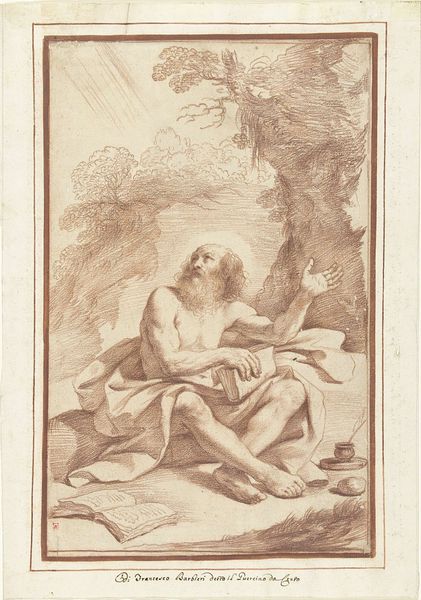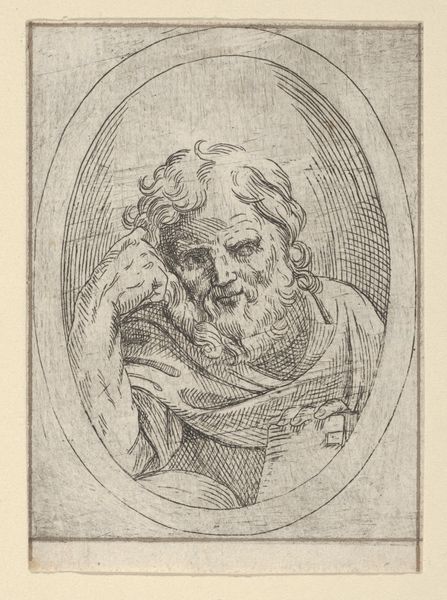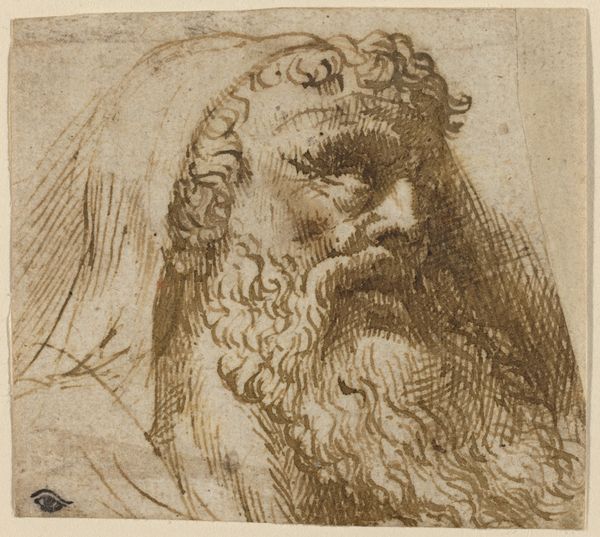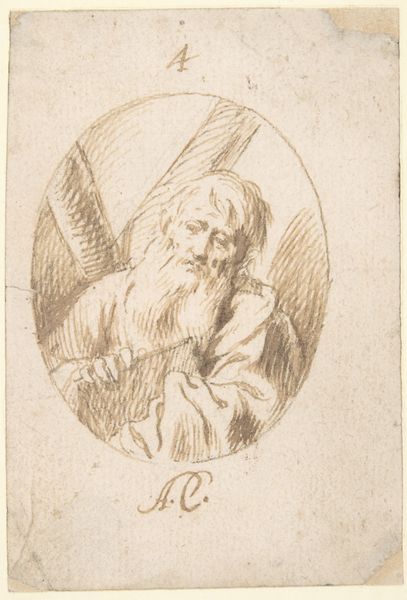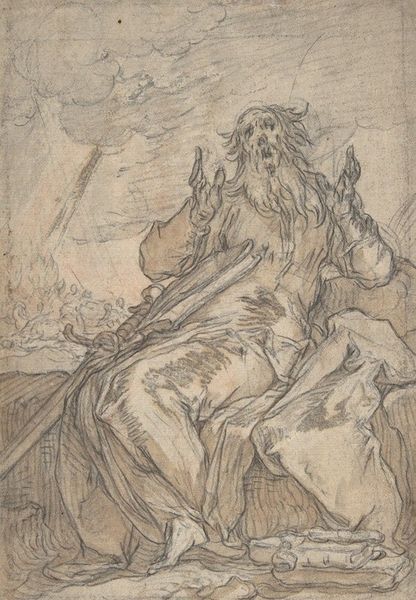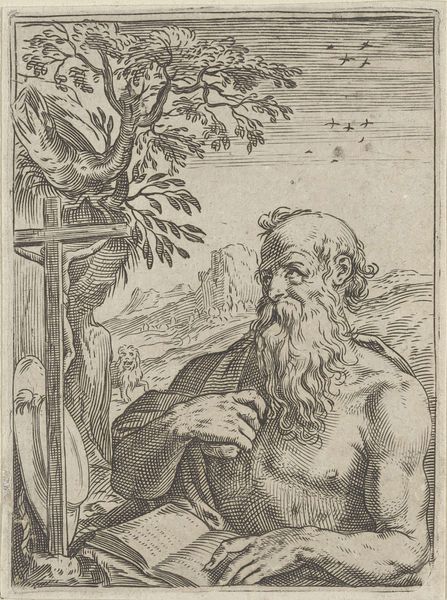
drawing, paper, ink
#
portrait
#
drawing
#
narrative-art
#
baroque
#
charcoal drawing
#
figuration
#
paper
#
ink
#
pencil drawing
#
portrait drawing
#
history-painting
Dimensions: height 226 mm, width 181 mm
Copyright: Rijks Museum: Open Domain
Curator: Let's look at this intriguing drawing at the Rijksmuseum. It’s "Moses with the Tablets of the Law," attributed to Guercino, created sometime between 1601 and 1666. Editor: My first impression is of profound weariness. The figure seems burdened, the lines conveying a sense of both age and great internal conflict. It’s the starkness of the ink on paper; the contrast is masterfully rendered. Curator: Absolutely. It’s fascinating how Guercino uses the figure of Moses—a monumental figure in Judeo-Christian tradition—to explore themes of leadership and disillusionment. This image encapsulates the weight of responsibility placed upon individuals within complex societal structures. Editor: Indeed. Observe the angularity of his pose, the way his arm props up his head. Semiotically, this communicates doubt, a questioning of his divine encounter perhaps, even outright rebellion. The very inscription of the law becomes an oppressive weight, not just a divine pronouncement. Curator: That is a very apt description, viewing the law as "oppressive." I interpret the figure as more introspective, maybe even saddened and deeply sympathetic. Considering his role as mediator between God and the Israelites, he is depicted as bearing not just stone tablets but also immense psychological weight due to his unique place in his people's history. Editor: An alternative take: note the strategic use of shadow, the texture achieved through varied ink strokes that highlight particular muscles of his torso, adding sculptural relief to a mostly linear creation. Consider that this method invites viewers into direct physical relation to a leader who must bear alone the isolation of interpreting higher demands into laws he alone must bring to his nation. Curator: That reading resonates given contemporary discussions about the burden of leadership. It serves as a poignant visual commentary on individual experience in leadership today. Editor: Agreed. By delving into his expert employment of light and shadow alongside symbolic forms, Guercino unveils intricate emotional depths from one sole person's fraught, and perhaps thankless, historical role. Curator: Ultimately, this representation transcends religious symbolism. Editor: True, it offers potent insights that feel startlingly timeless.
Comments
No comments
Be the first to comment and join the conversation on the ultimate creative platform.


